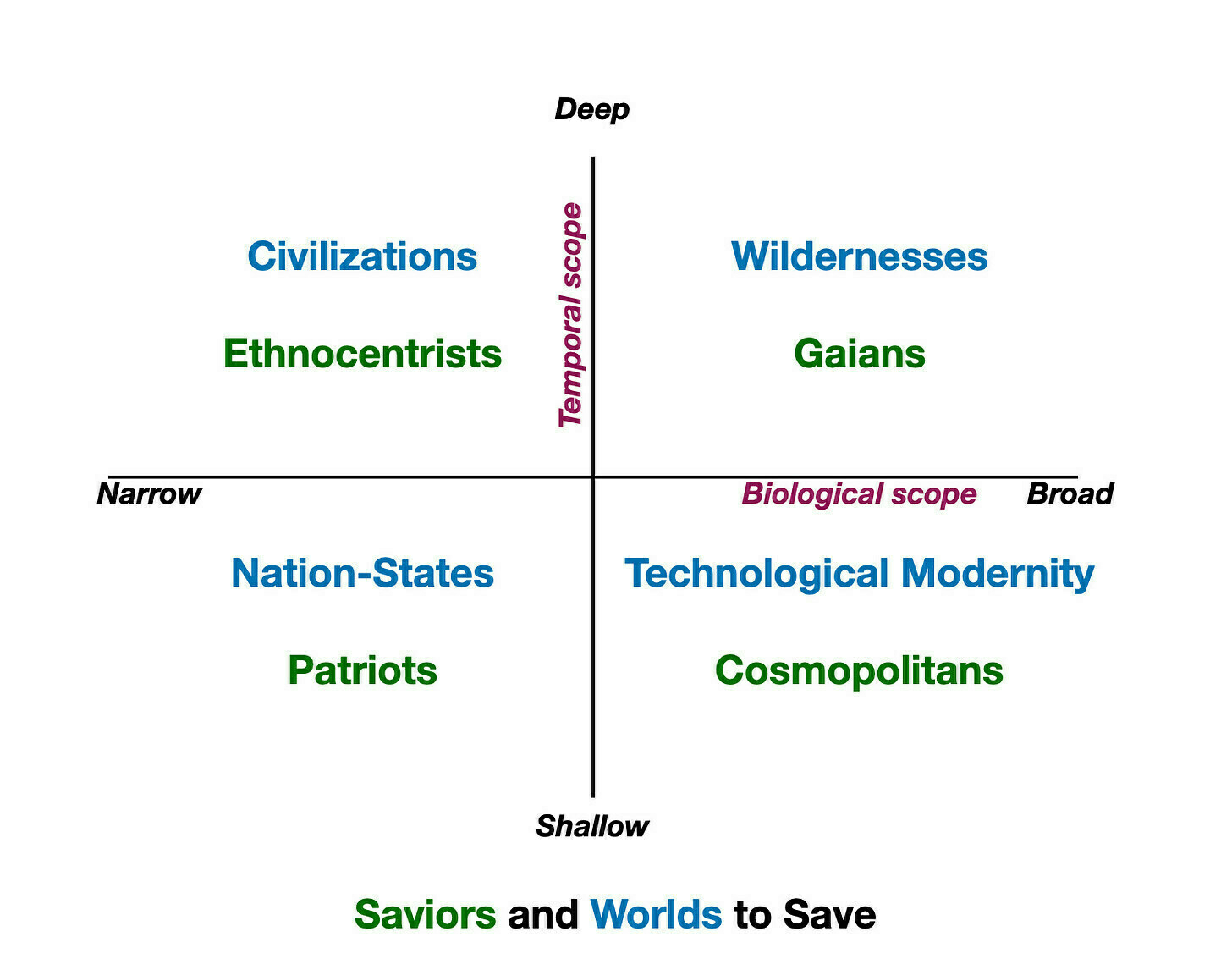Saving the world using a 2x2 matrix
I’m a fan of Venkatesh Rao’s writing, and in this post he explores what we mean by ‘saving’ when we talk about ‘saving the world’. To do this, he uses a 2x2 matrix, categorising people’s motivations along two axes: biological scope and temporal scope. He identifies four types of “worlds” people aim to save: Civilisations, represented by ethnocentrists; Technological Modernity, represented by cosmopolitans; Modern Nations, represented by patriots; and the World as Wildernesses, represented by Gaians.
Rao himself identifies as a “cosmopolitan with Gaian tendencies,” advocating for a world that is rich in both contemporary technological potentialities and natural history. He argues that the focus should not be on saving the world but on “rewilding” it so that it becomes self-sustaining and doesn’t require saving.

Worlds constructed with biologically narrow scopes (which I’d define as somewhere between family/kinship groups to ethnicities and races, with perhaps a few animal species of cultural significance included, but always falling short of including all of humanity, let alone all of the biosphere) have all sorts of analytical problems that makes them intellectually fragile. But my main problem with them is that they are boringly impoverished to the point of deadness. Even if I could, with careful construction, make them “work” as worlds-to-save, and imagine sustainable futures where they are the entirety of the world, I don’t see the point.Source: What we seek to save when we seek to save the world | RibbonfarmBut apparently, a significant portion of humanity disagrees with me on this front. Many are attracted to the idea that their world-to-save can expand to become all that is; replacing a messy, illegible pluralism with a gloriously insipid and legible monoculture that reigns supreme with a firm, dead hand. I suspect the very intellectual fragility of these worlds is part of their appeal, much as fragility is part of the appeal of house-of-cards games.
[…]
For a cosmopolitan with Gaian tendencies, to save the modern world is to rewild and grow the global web of already slightly wild technological capabilities. Along with all the knowledge and resources — globally distributed in ways that cannot be cleanly factored across nations, civilizations, and other collective narcissisms — that is required to drive that web sustainably. And in the process, perhaps letting notions of civilization — including wishful notions of regulating and governing technology in “human centric” ways — fall by the wayside if they lack the vitality and imagination to accommodate technological modernity.